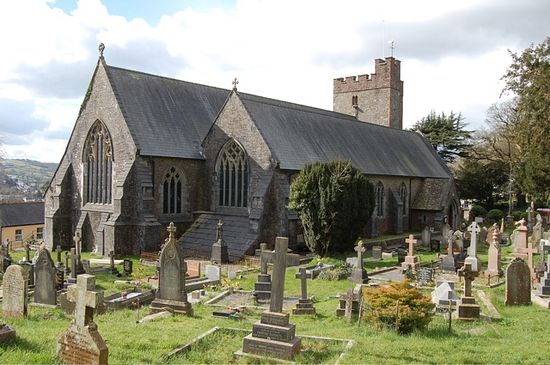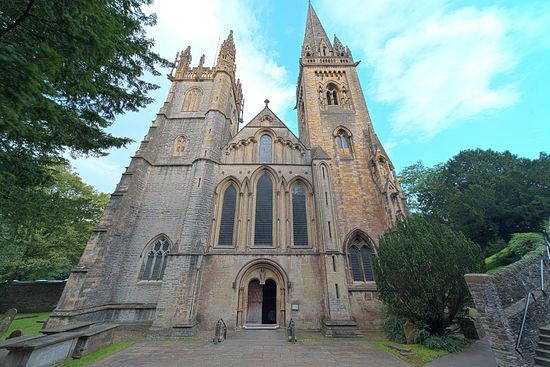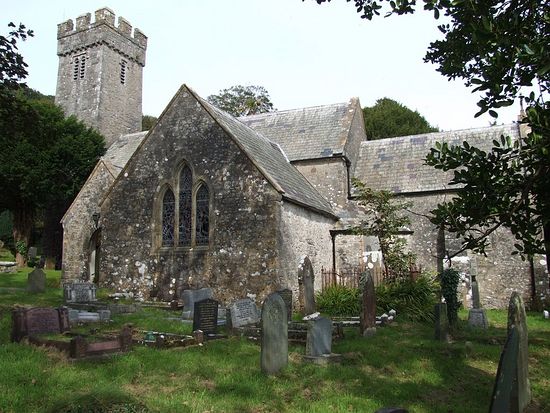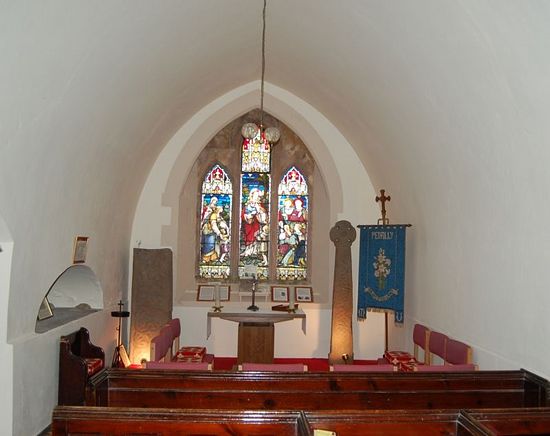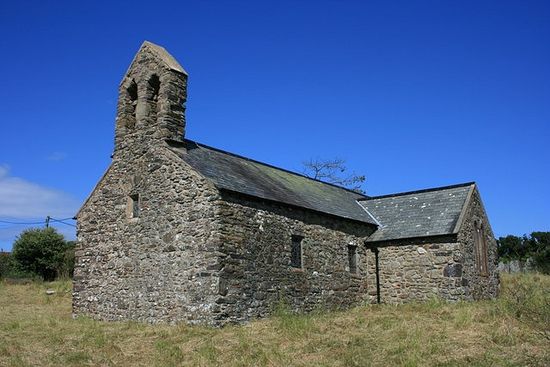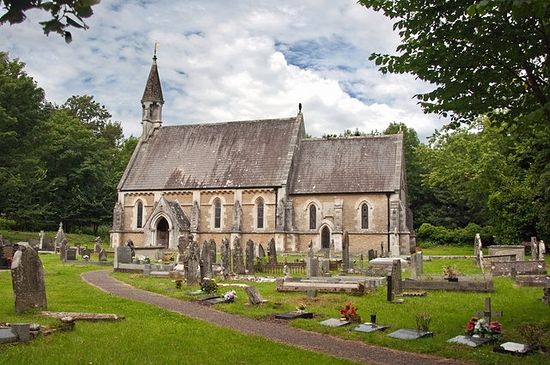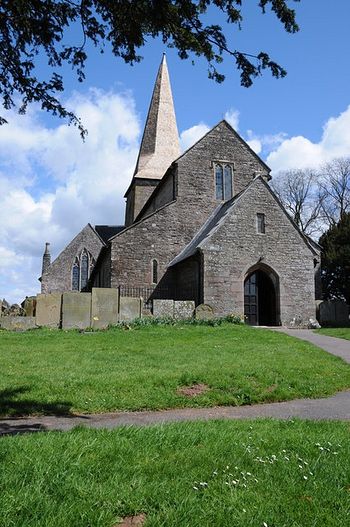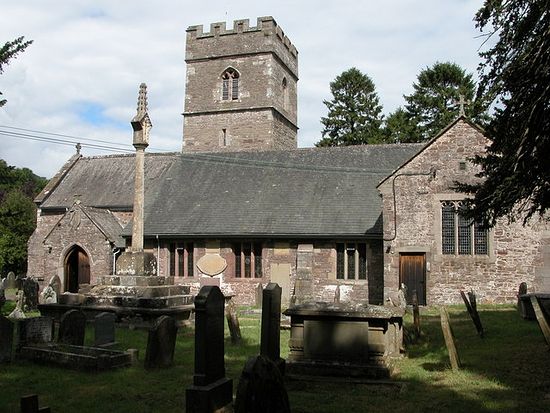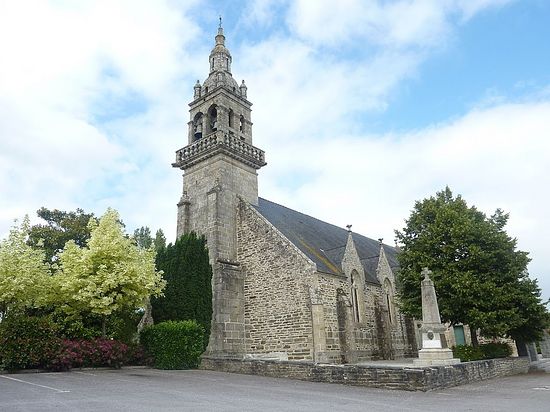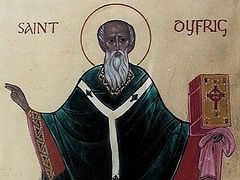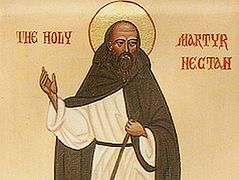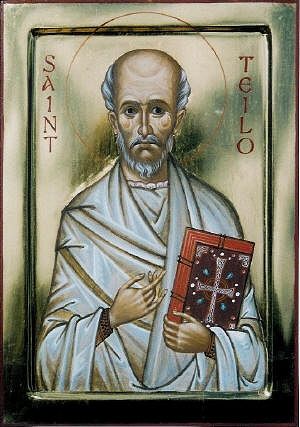 St. Teilo
St. Teilo Teilo was most probably born in Penally in present-day Pembrokeshire in south-western Wales. The future saint was closely related to the royal family, but from his childhood wholeheartedly decided to devote his life to the service of the Church of Christ. Young Teilo gave away all his possessions and learned the basics of monastic life through celebrated holy fathers: first St. Paulinus of Whitland (according to another version, St. Paul Aurelian), and later, St. Dyfrig in Hetland in what is now Herefordshire in England, not far from the Welsh border. He became a friend of St. David of Mynyw during his stay in Whitland. Later for some time he lived at Mynyw Monastery together with Sts. David and Aidan of Ferns. It was related that two deer once helped the ascetics Teilo and Aidan bring firewood from the forest to the monastery. St. David was said to be a cousin and teacher of Teilo.
Having learned from the great fathers of Welsh monasticism and gained spiritual experience, Teilo resolved to follow in the footsteps of these heroes of the spirit. Teilo is the founder of the Monastery of Llandeilo Fawr (“large church of Teilo”) in Dyfed (now in the small town of Llandeilo in the county of Carmarthenshire) which became one of the main centers of monasticism and learning in Wales for many centuries. Teilo left many disciples and spiritual followers after him in this monastery who were venerated as saints as well. Llandeilo Fawr was one of the centers of St. Teilo’s ministry. It is certain that Teilo also served as a bishop. In all probability his main see was in Llandaff, now a town near the capital city of Cardiff. According to popular tradition, Teilo served as abbot and bishop in Llandaff where he headed a monastic school and built the first cathedral church. It was said that as many as 1,000 monks studied in Llandaff under St. Teilo at the same time.
Later, after many years of successful preaching of the Word of God, Teilo transferred his diocese from Llandaff to Llandeilo. The foundation of monasteries in Penally (his birthplace) and other sites in Wales is attributed to him. With time Penally was transformed into a convent. This holy man established many churches and communities in various districts of the country, especially in South Wales where he was greatly venerated for many years. Presumably Teilo for a short time served as Bishop of Mynyw in the 540s. Llandeilo Fawr Monastery, his main foundation, along with numerous smaller communities established by him, were interconnected and assisted each other.
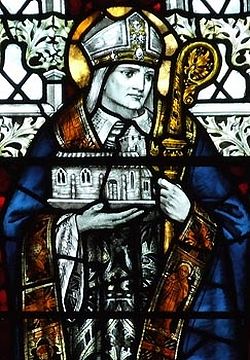 St. Teilo, a stained glass
St. Teilo, a stained glass Seven years later Teilo, together with his nephew St. Euddogwy (who afterwards became Bishop of Llandaff) and several others, returned to Wales where he reposed either in Llandeilo or Llandaff. Soon a question was raised: where the relics of the holy man should rest. Llandeilo, Llandaff and Penally claimed the right to be keepers of his relics at the same time. The monks decided to pray hard so that God’s will should be done. And, according to the later version of his Life, the saint’s relics miraculously trebled over the night so it became possible to enshrine them in all these three churches—in other words the relics were divided into three parts.
In South Wales Teilo may have founded a monastery called “Familia Teliavi”, that is, “Teilo’s family”, but no location or other details of it survives. According to another legend, once St. David together with Sts. Paternus and Teilo made a trip to Jerusalem (though other version claims that the companions of David were Paternus and Cadoc).
Teilo performed numerous miracles in his lifetime (he raised one man from the dead, healed another one from the palsy and so on) which continued after his repose from his relics and holy wells associated with him. In the Middle Ages Teilo was loved and venerated as one of the greatest saints and Church figures in the country’s history. His veneration from Wales extended to Cornwall, Devon, Brittany and neighboring regions.
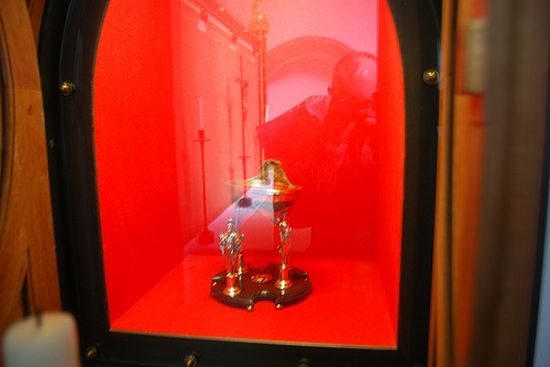 Head relic of St. Teilo in Llandaff Cathedral(photo from Flickriver.com)
Head relic of St. Teilo in Llandaff Cathedral(photo from Flickriver.com) 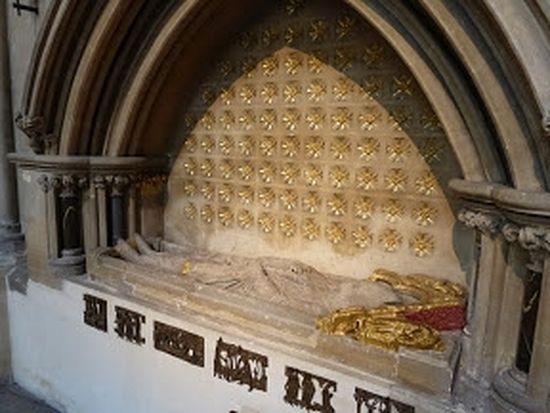 Tomb of St. Teilo at Llandaff Cathedral
Tomb of St. Teilo at Llandaff Cathedral What is believed to be the ancient shrine of St. Teilo, along with his skull, by the mercy of God survive at Llandaff Cathedral to this day and attract pilgrims, including Orthodox. His supposed tomb stands to the right of the high altar and his supposed head relic is kept in the chapel which bears his name and is housed in a specially constructed reliquary. The skull is mounted on a silver base. For many centuries it was a custom to take an oath on the saint’s shrine. It was recorded that the shrine of St. Teilo at the cathedral was opened in 1850 and also earlier in 1736 by an architect. When the latter opened his shrine, it turned out that the saint’s remains (wrapped in leather) along with his episcopal crozier, cross, chalice and other items were practically intact. A statue of this saint today can be found in the west front of the cathedral. Some parts of Llandaff Cathedral are from the twelfth century; though this church was heavily damaged during the Second World War, it was subsequently restored in all its glory. St. Teilo together with Sts. Peter and Paul, Dyfrig (whose shrine still rests within the cathedral) and Euddogwy is a joint patron-saint of this Anglican cathedral. He is also a patron-saint of the Welsh capital city of Cardiff, which is very close to Llandaff and has a Catholic parish church of St. Teilo and Our Lady of Lourdes.
From a considerable number of churches dedicated to St. Teilo in Wales most can be found in the counties of Carmarthenshire, Pembrokeshire and Glamorgan. Churches and toponyms that bear his name are also scattered in Cornwall, Devon and Brittany. The modern Anglican Diocese of St. Davids alone has 12 churches dedicated to St. Teilo, and the Diocese of Llandaff has at least six churches which have him as their patron. No fewer than six churches in Devon and Cornwall are connected with him. Quite a few schools are named after him as well.
Today Llandeilo is a little town in Carmarthenshire. Here Teilo founded his main monastery, served as abbot and bishop, lived as a hermit. The town church is dedicated to its founder to this day. It is early medieval by origin but was entirely rebuilt in 1850. After repose of Teilo the Llandeilo Fawr Abbey continued to develop and with time became the major church of all the neighboring districts. It is known that around the ninth century a beautiful and ornate Gospel, called “St. Teilo’s Gospel”, was kept in Llandeilo. It had been created a century before, most probably in Mercia in England. It was considered that this Gospel “had belonged to St. Teilo himself”. Afterwards it was transferred to the English town of Lichfield where it is displayed to this day as a great relic. From 1290 on, on the orders of King Edward I of England (1239-1307), an annual fair in honor of St. Teilo was held near the church in Llandeilo. This fair stopped only in the twentieth century. Fragments of two Celtic crosses (date to c.900) were also discovered and now are kept in Llandeilo church. There is a holy well of St. Teilo near the eastern end of the church.
In the coastal village of Penally where the saint was born, a parish church is dedicated to Sts. Nicholas and Teilo. Among its treasures there are a recently restored ninth-century fine high Celtic cross and a smaller ancient stone cross. In the Middle Ages there was a monastery here which preserved a portion of his or other saint’s relics. Approximately from the fourteenth century till the Reformation it was a convent; only traces of minor ruins of the Norman monastery church survive. There is a holy well of St. Deiniol nearby. In ancient times the pilgrims’ route to St. Davids passed through this village.
It is known that formerly over twenty places in Wales bore the name that means “church of Teilo”—this is indicative of the veneration of the saint throughout the country. In all no fewer than forty-five toponyms in Britain and Brittany comprise the name of St. Teilo. The saint is depicted on stained glass windows of a number of churches of Wales, for example, at the Holy Trinity Church in Abergavenny. A thirteenth-century church in the village of Llantilio-Crossenny in Monmouthshire, not far from Abergavenny, is dedicated to St. Teilo. The church has a very high spire and due to its large size it is often nicknamed a “baby cathedral”. The church is in the early English and Decorated Gothic styles. It is cruciform and its interior has many interesting features. In this spot a battle between a king of Gwent and pagan Saxons may have taken place in the sixth century. According to legend, St. Teilo took a cross, stood on the hillock on which the church was to be built and began to pray. And under the effect of his prayer the Saxons scattered. The church in the village of Llandeloy in Pembrokeshire is dedicated to our saint. This fine twelfth-century church was rebuilt early in the twentieth century but now is redundant. There is a holy well hidden among the vegetation near this church. A thirteenth-century church with three chantry chapels in the small hamlet of Llantilio Pertholey in Monmouthshire again has a dedication to St. Teilo who is depicted there in stained glass. Another twelfth-century St. Teilo’s Church in the spot known as Llandeilo Tal-y-Bont near Swansea was closed in the 1970s, then dismantled and has now been rebuilt at St. Fagans National History Open-Air Museum in the city of Cardiff (located in the grounds of the castle, this museum comprises over forty reconstructed historic buildings). Remarkably, during its dismantlement well-preserved ancient murals were discovered on the church walls under the wall-plaster. The village of Bishopston, called in Welsh Llandeilo Ferwallt, situated in the Gower Peninsula, has a church dedicated to St. Teilo. The parish church in the village of Merthyr Mawr near the town of Bridgend is dedicated to St. Teilo. It was built in 1850s on the site of a very ancient church. A modern Roman Catholic church in the town of Tenby in Pembrokeshire is dedicated to the Holy Cross and St. Teilo.
There is an ancient holy well of St. Teilo in Llandyfan (attached to a chapel), Carmarthenshire, which in old times cured pilgrims from paralysis and has been used as baptistery. Another St. Teilo’s holy well along with a St. Teilo’s church ruins can be found at Llandeilo Llwydiarth near Llangolman village in Pembrokeshire which formerly healed chest diseases.
A commune in the Cotes-d’Armor department of Brittany is called Saint-Thelo after the saint. Small portions of his relics may still be preserved in the Breton localities of Landeleau (“church of Teilo”) in the Finistère departement, Plogonnac in the same departement, and Saint Télo (“Saint Teilo”) in the Côtes-du-Nord departement.
Parish churches in Brittany are dedicated to St. Teilo in the Leuhan commune in the Finistere departement, the Montertelot commune in the Morbihan departement, the Plédéliac commune in the Cotes-d’Armor departement, in Landeleau and Saint Télo communes, mentioned above; there is also a St. Teilo’s chapel near Plogonnac. In Brittany this saint is often depicted on a deer and is commemorated on several extra days of the year.
Holy Father Teilo, pray to God for us!

